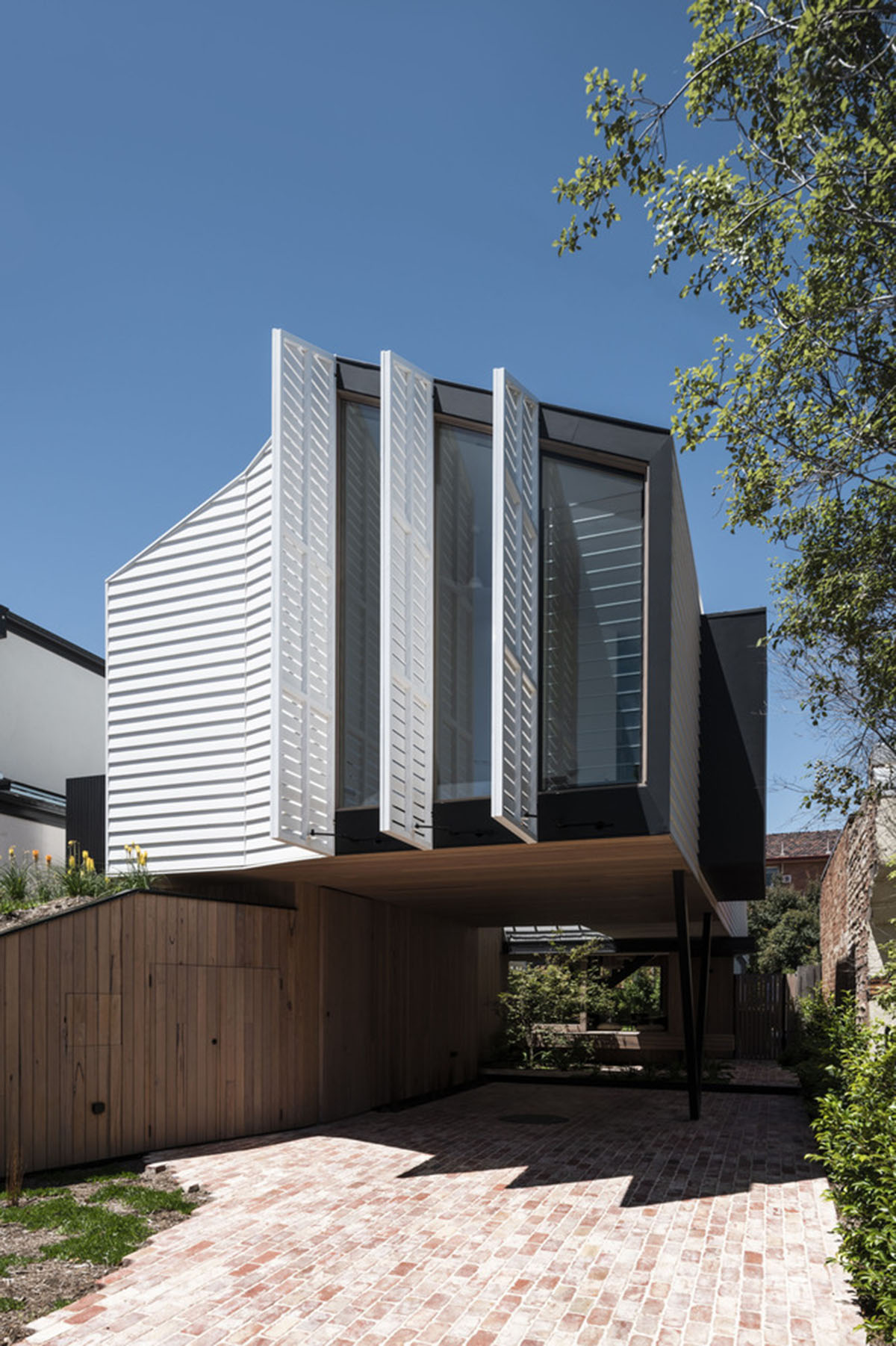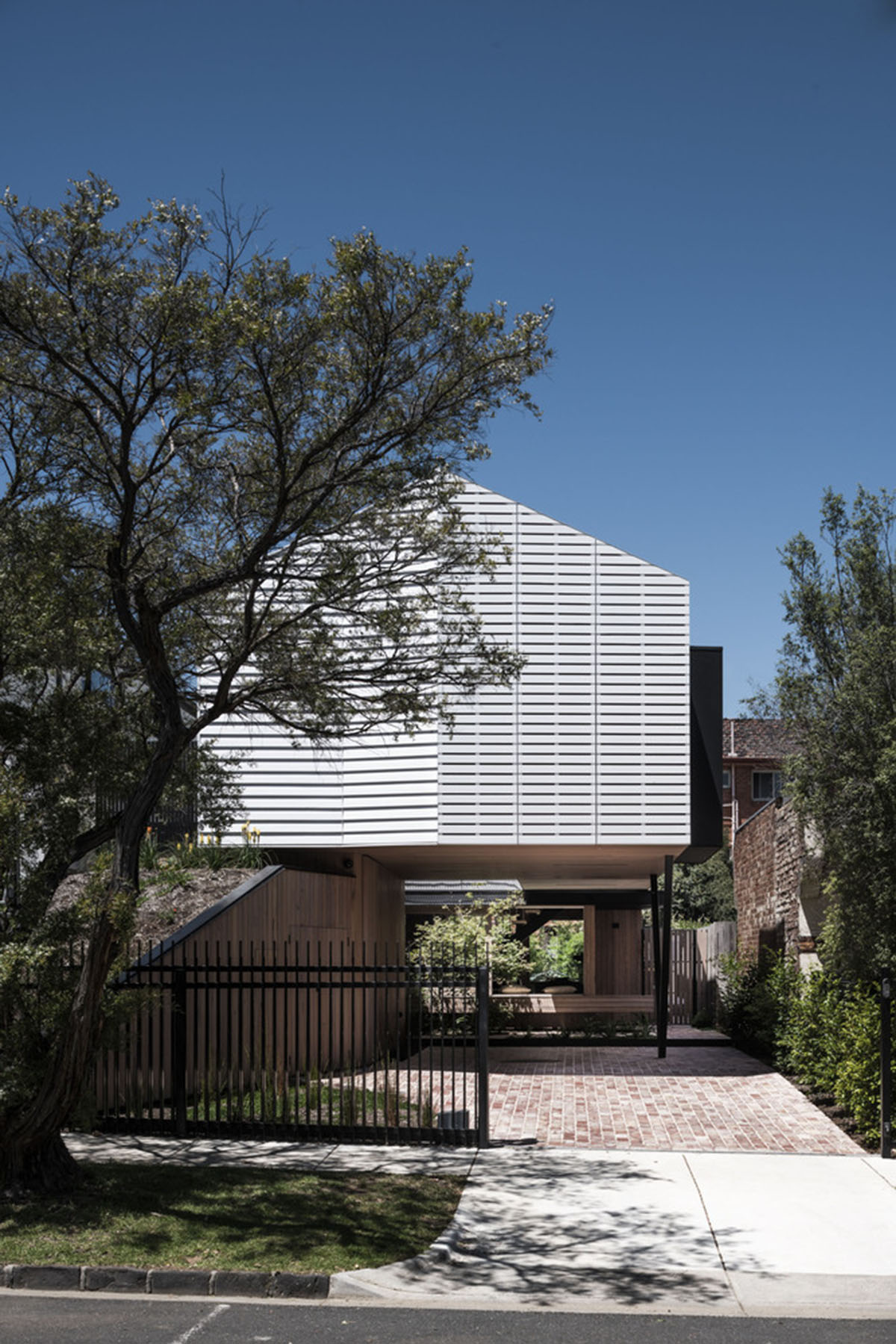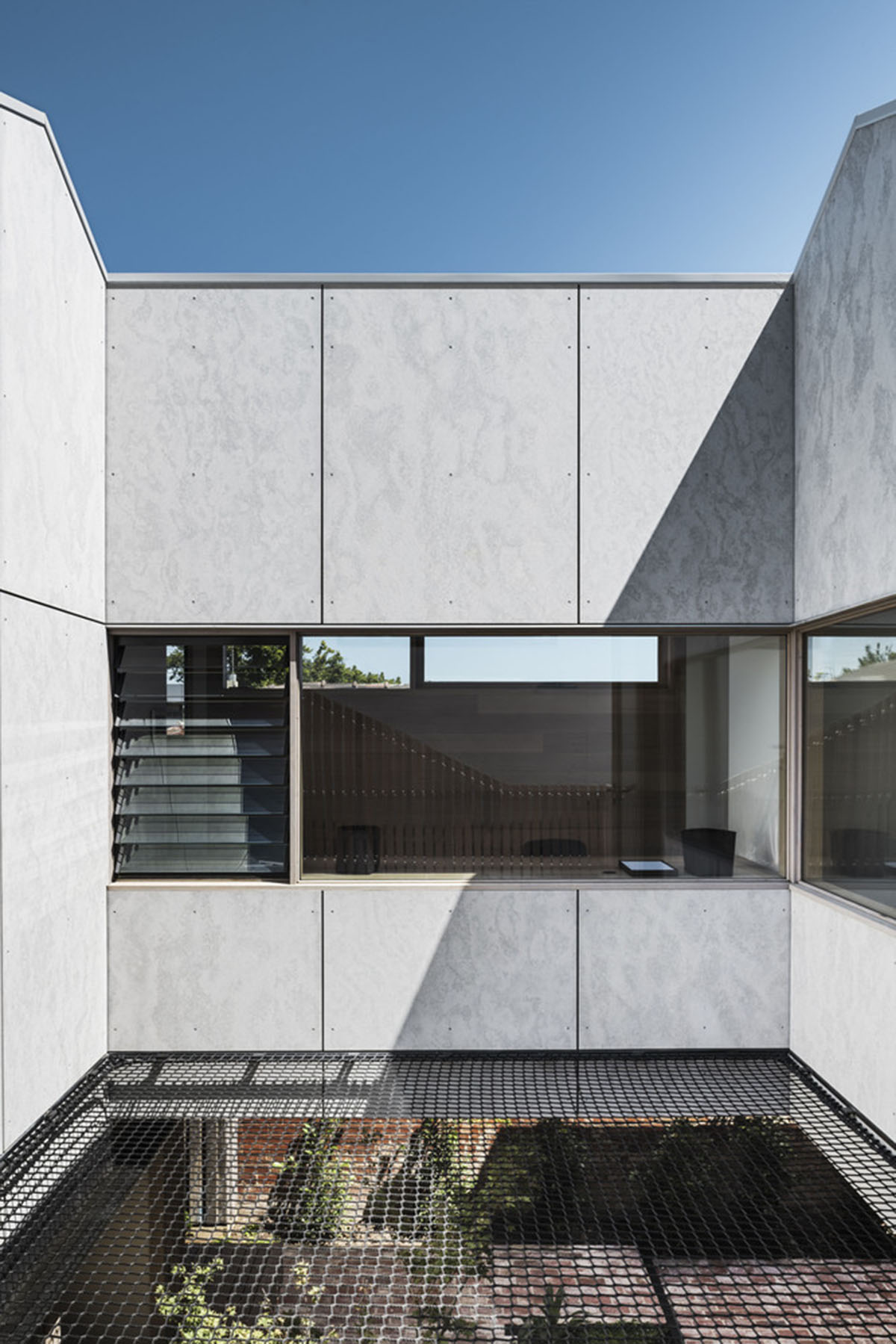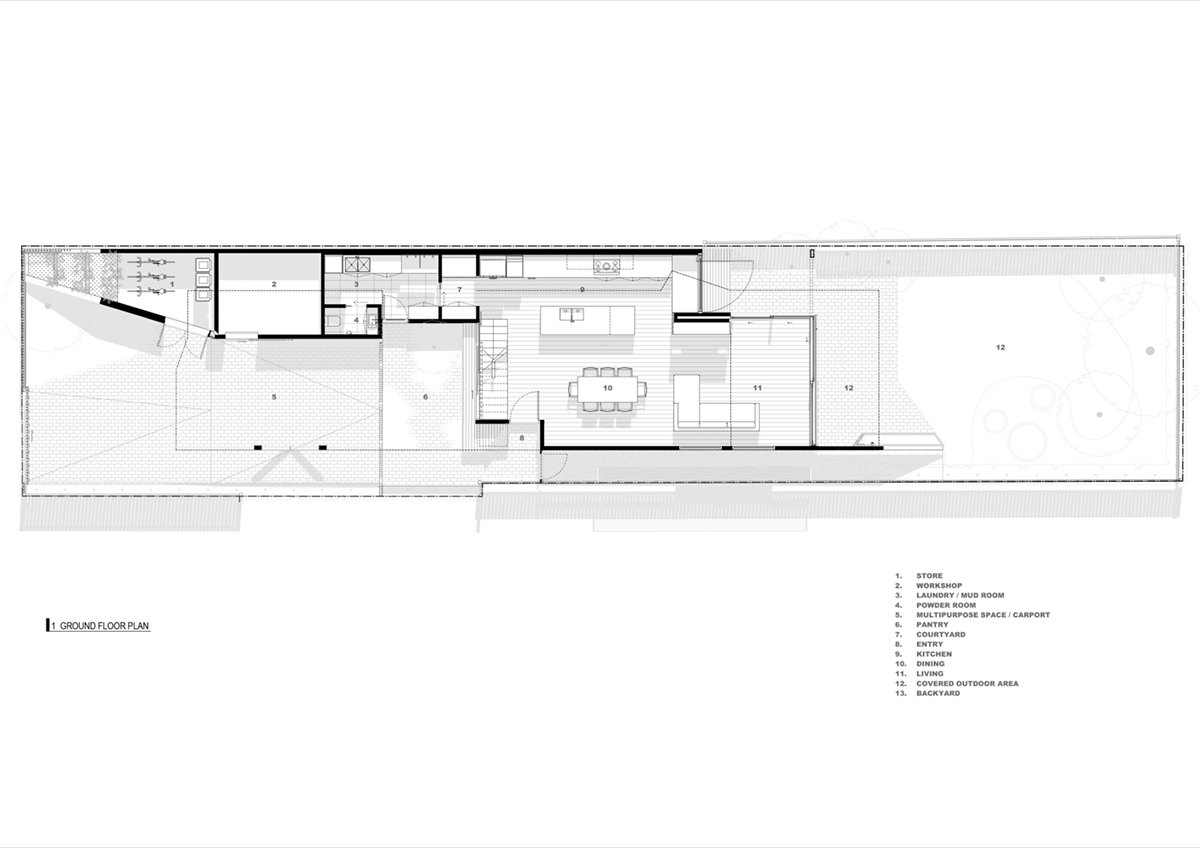Submitted by WA Contents
FIGR Architecture & Design built this Pop-up house with floating volume in Essendon, Australia
Australia Architecture News - Mar 11, 2021 - 10:47 9830 views

Australian architecture studio FIGR Architecture & Design has built this family house with a floating volume that hovers above a landscaped mount in order to create the beginning of a journey into the house.
Named POP-UP House, the 215-square-metre house is located in Essendon, Australia and it attempts "to counter the status quo of a new family home in a predominantly heritage setting."
The studio intend to bring a new approach in this family house by playing with set backs and solid-void relationships, while creating its contemporary language with surprising spaces.

"A common approach with new homes is to occupy majority of the site whilst retaining minimal front setback with a fortified sheer built form that shuts itself off from the public realm interface," said FIGR Architecture & Design.
As the architects highlight, the studio's approach "was to create a home that challenges the aforementioned notion in order to discover opportunities in the often static, underutilised and forgotten."

The house, drawn in elongated plan layout, focused on engaging with the urban realm, by inviting opportunities for interaction between inhabitants, passer-by’s, and neighbours to promote a sense of community engagement.
When presented from the street the elevation is an extruded silhouette which is a sympathetic nod to the familiar roof forms of the surrounding vernacular.

The upper volume of the building hovers above a landscaped mount that creates the beginning of a journey into the house. Flanked by existing neighbouring brick walls, that become internal edges which establish a dialogue between old and new.

The hovering belly of the house creates an undercroft that guides the guests into the house through lush, landscaped gardens creating a multi-faceted zone in the front yard that can adapt and evolve in program/use.
The green landscaped wedge is planted with native vegetation which gently slopes back to the street frontage creating a mount that engages the public realm.

"From the outset our clients felt their new home had to engage with the context beyond the site boundary creating a visually engaging public setting where neighbours and friends can be part of informal gatherings," said the studio.
"This modest home required constraint and duality of uses in its architecture. The in-between/ambiguous spaces had to contain multiple programs."

One of such programs is the study which is positioned within a thoroughfare activating an otherwise underutilised threshold. The green wedge facilitates bicycle storage, building services and a water retention system.

The studio extended outdoor terrace into a netted area, utilising the in-between space to create additional zones for play and activation whilst allowing light to penetrate the front courtyard.
To further remove the idea of redundancy the underbelly of the dwelling doubles up as a carport, an extension of the workshop and informal entertaining area. This mouldable zone provides long term flexibility for adaption of use.

To increase site permeability, the architects created various garden zones and a large garden at the rear of the site. High quality thermal insulation is provided with the walls, roofs and floors with under slab insulation and thermally broken timber framed double glazed windows.

"Where possible we have sourced local trades, materials and fittings," continued the studio.
"The Pop-Up House is designed to be durable and long lasting. The roof is clad in Surfmist Colorbond which reduces heat build-up in the home and the heat island effect in our cities."

The walls are predominantly white painted weatherboards with accents of silvertop ash cladding. The roof form allows for strategic placement of solar panels for optimum capture.

A 5000-litre water tank has been buried in the front yard. All the roof water is captured and reused to flush toilets and garden irrigation. Custom fabricated mechanically operable screens are strategically positioned on the first-floor western façade for controlled screening of the Western Sun whilst allowing for maximum flexibility in managing solar access and views to the nature strip.









Ground floor plan

First floor plan

Roof plan

East and West Elevations

North and South Elevations
Project facts
Project name: POP-UP House
Architects: FIGR Architecture & Design
Location: Essendon, Australia
Size: 215m2
Date: 2021
Project Team: Adi Atic, Michael Artemenko, Barbie Vongphone
Styling: Ruth Welsby
Builder: Natural Build Vic
Engineer: The Meyer Consulting Group
All images © Tom Blachford
All drawings © FIGR Architecture & Design
